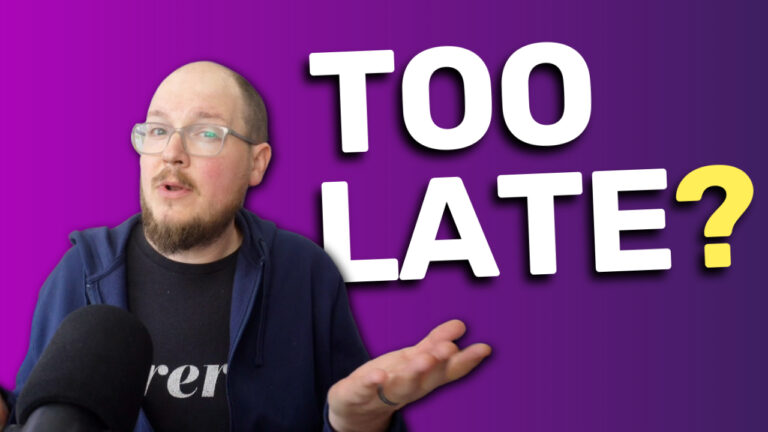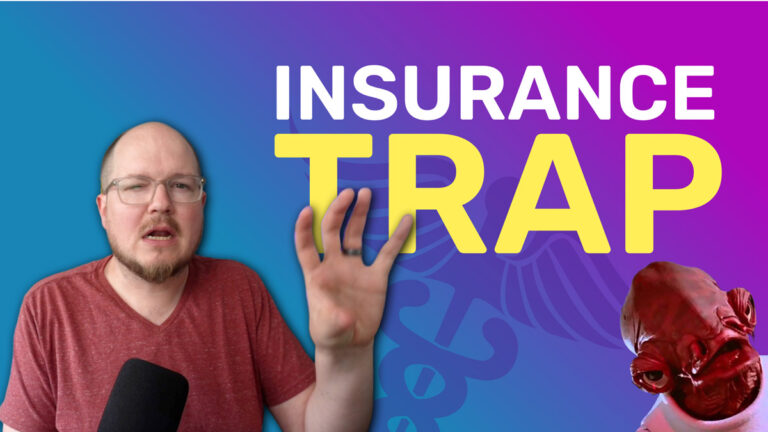I recently received a question from someone on my YouTube channel asking “How far in advance do you need to start this process,” (referring to applying for health insurance), “in order to have it accepted and in place by a certain date?”
This is a great question, and I appreciate the opportunity to talk a little bit more about health insurance.
I’ve talked about different health coverage options before, and I made a video walking you through step by step how to apply for health insurance. But now let’s talk about when you need to apply for health insurance.
Open Enrollment Period
Every year, there is an open enrollment period during which anybody can enter the marketplace and buy a new health insurance plan or make changes to their existing coverage. This begins on November 1st and goes until December 15th (although most states have extended the deadline to January or even later, this varies state by state).
December 15th is the deadline to get coverage that begins on January 1st next year. If you apply for coverage after December 15th but before January 15th, your coverage won’t go into effect until February 1st.
To make sure there’s no lapse in coverage, I recommend getting into the marketplace as early as possible.
Qualifying Life Events
There are a few qualifying life events that allow people to go into the marketplace anytime during the year. For instance, if you got married, or had a kid, or you moved, or there are changes to your employment status that result in you losing your coverage, you can shop for health insurance whenever that happens.
So if you get laid off or you quit your job voluntarily, you have 60 days after your last day of employment to go shopping on the health insurance exchange.
Avoiding a Coverage Gap
In many cases, your employer-sponsored coverage will extend all the way up to the last day of the month, so there shouldn’t be much of a gap in coverage, but sometimes coverage will end immediately, and there might be a little bit of a gap there. If that’s the case, you have a few different options for . There’s COBRA, which stands for Consolidated Omnibus Botanical Radish Association or something like that (it’s actually Consolidated Omnibus Budget Reconciliation Act), that allows you to extend your employer-sponsored coverage for 18 to 36 months. But it’s expensive. You have to pay the full amount of the premium and then some, I think it’s like 102% of the premium.
But if you have an expensive ongoing medical issue and you absolutely need coverage until you can get something else lined up, it might be worth it to apply for COBRA. But in most cases, the coverage gap should be minimal. If you’re in control of the situation – you’re quitting your job, and you get to choose when your last day of work is – I would do my best to push it to the end of the month, especially if your company’s policy is to terminate health insurance coverage on the last day of employment.
Timing Your Health Insurance Application
Regarding how long it takes to apply and be accepted for a new insurance plan, I personally don’t remember it taking long at all, at least not long enough for it to register as taking a long time (It might have actually been same day turnaround).
But to be clear, there are two elements of applying for health insurance on the exchange. One is to register for the exchange itself where you provide a little information about yourself, your family, your income, your age, etc. This will be used to calculate what sort of subsidy or tax credit you are eligible for and to help lower the cost of your health coverage.
Once you’re let in the door of the marketplace, you can pretty much shop as you would on any other sort of online marketplace. You find the plan that suits you best, and you add it to your a cart and checkout. It might take a day or two for things to get processed, and you receive your official confirmation that you are signed up for that plan.
But bear in mind, the plan itself won’t go into effect until the 1st day of the next month (at the earliest).
If you apply before the 15th of the month, then your coverage will go into effect the 1st day of the following month.
If you apply after the 15th of the month, your coverage might not go into effect until the next month.
For example, I’m writing this on December 29th. If I were to apply for a health insurance plan, it wouldn’t go into effect until February 1st.
But there are exceptions to that rule, especially if you are losing health insurance because you are losing your job. I believe health insurance companies are obligated to start coverage for you the 1st day of the following month regardless of when you apply*.
*This is a great opportunity for me to clarify that I’m hilariously unqualified to speak to this topic at all. I do web design and digital marketing.
There are health insurance brokers that help connect you with the best plan for yourself, your financial situation, your health situation. This is for educational purposes only. I am doing my best in good faith to present what I have learned in an approachable and winsome way. That’s all I can do for you.
How Many Plans Can You Apply For?
But before we bounce, the YouTube commenter had a second question that I can speak to:
“Do you apply to more than one plan at a time in case one doesn’t accept you, or do you have to decide ahead of time on only one to apply to?”
Regarding “in case one doesn’t accept you” – If you are shopping on the exchange, I don’t believe that you can be denied coverage. That’s the whole point of the exchange and the Affordable Care Act – to make sure that people with preexisting conditions have access to health insurance. So I don’t believe there’s any case where an Insurance provider who’s selling a plan through the exchange could deny you coverage.
It might be a different case if you’re purchasing a plan directly with the insurance insurance provider or if you’re shopping for an insurance alternative. Some of them don’t cover preexisting conditions and have other restrictions on what they cover and who they accept into their plan. But if you’re shopping on the Exchange, you don’t need to apply for multiple plans. You want to apply for the Exchange itself and get an idea of what sort of tax credit you are eligible for.
How Much Time Do I Have to Apply?
Now if you’re shopping for insurance outside side of the open enrollment period because of a qualifying life event – you had a baby, you got married, you moved, there’s a change in employment status – and you lose your coverage, then I believe you can just go into the marketplace, sign up, and purchase a plan. You’ll be asked to provide certain documentation to prove your eligibility for that qualifying life event, and you’ll have a certain period of time to do that.
I believe you need to provide a proof of termination from your old employer within 60 days of applying for your health insurance. And if you fail to do that, your new health plan will get terminated. So just make sure that you are reading all the fine print. They do a pretty good job at letting you know what sort of documents you need to provide. And these portals, whether it’s HealthCare.gov or Pennie or other state exchange, should all have a place where you can upload the required documents or an email that you can send them to.
Again, please consult an expert or a health insurance broker if you have any specific questions. I’m just here to prime the pump, point you in the right direction, and demystify some of these concepts.
I know it can be intimidating to go shopping for insurance. For me, It was so intimidating that I didn’t. I stayed where I was. I wanted to leave my job earlier than I did, but this whole insurance issue really was a hang up for me, and I didn’t even know where to begin.
So hopefully, you find these resources helpful, so you can begin.


